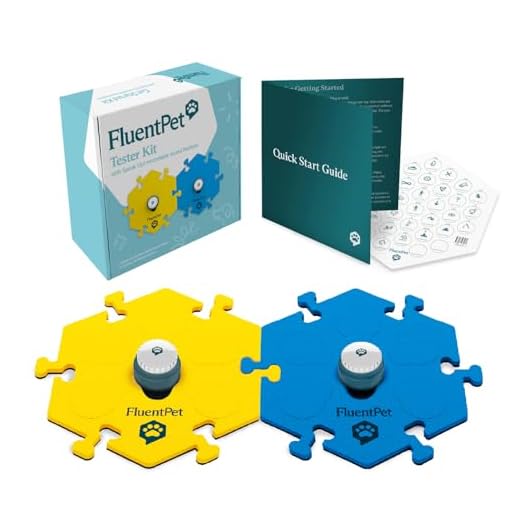


Pay close attention to those vocalisations during snack time; they may indicate more than just a desire for a tasty morsel. In my experience, I’ve noticed that certain vocal sounds often reflect excitement, anticipation or even anxiety. When my furry companion hears the rustle of a treat bag, the response can be immediate and intense, often manifesting as a series of high-pitched sounds.
One reason for these sounds is the conditioning process. From the moment my pup first tasted a treat, a strong association formed between that delightful flavour and the positive reinforcement we provided. This creates an expectation, and when the sound of the bag is heard, it triggers an emotional response. It’s as if they’re saying, “I remember that! I want it now!”
Another aspect to consider is the social dynamic. Often, these vocalisations serve as a means of communication with us, their human companions. They might be expressing eagerness or trying to convey a sense of urgency. I’ve found that responding calmly and patiently helps to manage those vocal outbursts, reinforcing a sense of calmness while waiting for rewards.
Understanding this behaviour can enhance our interaction with our pets. Instead of viewing these sounds as mere noise, recognising them as a form of communication can deepen the bond we share. By acknowledging their feelings and responding appropriately, we foster a more harmonious relationship during snack time!
The Role of Excitement in Canine Behaviour
Recognising the impact of enthusiasm on furry companions is essential for understanding their reactions. When a canine anticipates a reward, their body language shifts dramatically. You’ll notice their ears perk up, tails wag with fervour, and eyes glisten with anticipation. This heightened state often leads to vocalisations, including whines or barks, as they express eagerness.
During training sessions, I observed that my pet became noticeably more animated when treats were involved. This excitement can enhance learning, making it easier for them to grasp commands. Incorporating rewards into training not only sparks joy but also builds a positive association with learning experiences.
It’s fascinating how excitement manifests differently in various breeds. For instance, working breeds might display a focused intensity, while more playful types can become exuberant and bouncy. Understanding these variations allows for tailored approaches to training and interaction.
To channel this excitement effectively, incorporating structured playtime or training sessions can help maintain control. Establishing a routine that includes moments for rewards encourages your furry friend to manage their enthusiasm. This balance fosters a sense of calm, allowing them to enjoy the experience without overwhelming themselves.
Lastly, recognising signs of overstimulation is critical. If your companion becomes too excited, it may lead to frustration or anxiety. Observing their behaviour and adjusting interactions accordingly creates a more harmonious environment, allowing both of you to enjoy your time together.
Understanding the Communication Methods of Canines
Recognising the nuances in canine communication can significantly enhance your bond. Observing body language is paramount; for instance, a wagging tail often signals happiness, while a lowered head may indicate submission or uncertainty. Pay attention to ear positions as well; perked ears suggest alertness, while ears pinned back can denote fear or anxiety.
Vocalisations serve as another layer of interaction. Beyond the common barks, a series of soft whines or yips can express a range of emotions from excitement to distress. Each sound has its context, and learning to differentiate them can clarify what your furry companion is trying to convey.
Facial expressions are equally telling. A relaxed mouth and soft eyes typically reflect comfort, while bared teeth or intense staring can signal aggression or discomfort. When engaging, mirror their expressions to foster trust and understanding.
Engagement through play also communicates feelings. A playful bow, where the front legs are stretched forward, invites interaction and signals joy. During playtime, watch for changes in behaviour; excessive panting or retreating may indicate overstimulation and the need for a break.
Lastly, scent plays a crucial role in canine interactions. A simple sniff can convey a wealth of information, from identifying familiar friends to assessing the mood of a new acquaintance. Respecting their need to explore scents can be an enriching experience for both of you.
By observing these methods closely, you can respond more effectively to your companion’s needs, creating a more harmonious relationship.
How Anticipation Affects a Canine’s Response
Anticipation significantly shapes how our furry companions react, especially in situations involving rewards. When I first started training my pup, I noticed that the moment I reached for the treat pouch, his excitement skyrocketed. It wasn’t just the prospect of receiving something tasty; it was the build-up that truly got him going. His tail would wag furiously, and his eyes would light up in a way that was unmistakably eager.
The Science Behind Anticipation
Research indicates that this heightened state of expectation can trigger a release of dopamine, a neurotransmitter associated with pleasure and reward. As my pet awaited his reward, I could see this effect in action. His entire body would seem to vibrate with energy, communicating his desire to engage. This behaviour showcases how anticipation not only impacts mood but also enhances focus. During training sessions, I began to leverage this by introducing a cue before offering a reward. The result? A more attentive and responsive companion, ready to learn.
Practical Tips for Enhancing Anticipation
To maximise this positive response, consider incorporating a consistent routine. For example, using a specific sound or phrase before presenting a reward can create an association that heightens excitement. I often use a clicker or a unique phrase like “Good boy!” just before offering a treat. This not only builds anticipation but also reinforces positive behaviour. Additionally, varying the type of rewards can keep the excitement alive. Sometimes, I’ll use his favourite snack, while other times, I might offer a new flavour. This unpredictability maintains his interest and enthusiasm, making every training session a delightful experience.
Identifying the triggers for whining in your canine companion
Observe your pet’s body language closely. Signs such as pacing, tail position, or ear movements can hint at what may be causing the vocalisations. For instance, if the tail is tucked and ears are back, it might indicate fear or anxiety. Conversely, a wagging tail and perked ears could suggest eagerness or anticipation.
Environmental factors
Pay attention to the surroundings during moments of vocalisation. Loud noises, changes in routine, or the presence of unfamiliar people or animals can provoke a response. For example, my own furry friend would often vocalise when the mailman arrived, feeling the need to alert me to this ‘intruder.’ Identifying consistent triggers in the environment helps in understanding the reasons behind the behaviour.
Emotional states
Recognise your companion’s emotional responses. Excitement, frustration, or discomfort can lead to vocal expressions. My dog often makes sounds when he sees me preparing his favourite meal, showcasing his anticipation. Understanding these emotional cues allows for better communication and a more harmonious relationship. If you find specific situations consistently lead to vocalisations, you can work on desensitisation or training strategies to alleviate them.
Strategies to Manage Excessive Whining During Treat Time
Implement a structured routine for reward distribution. Consistency helps your furry companion understand when to expect goodies, reducing anxiety and vocalisations.
1. Use a Command
Establish a specific command such as “quiet” or “easy.” Train your pet to associate this word with calm behaviour. Reinforce the command by rewarding silence before offering the treat.
2. Gradual Exposure
Introduce rewards gradually. Start by showing the snack but not giving it immediately. This creates a sense of patience. Over time, increase the duration before delivering the prize.
3. Distraction Techniques
Keep your companion occupied with a toy or puzzle feeder. This diverts attention from the excitement of the reward and encourages independent play, reducing vocalisations.
4. Reward Calm Behaviour
- Observe your pet’s behaviour prior to treat time.
- Only provide rewards when your furry friend is calm and quiet.
- Gradually increase the duration of calmness before handing out the reward.
5. Control the Environment
Minimise distractions during treat time. Close windows or doors to limit outside stimuli. Creating a quiet space helps maintain focus and reduces the urge to vocalise.
6. Monitor Triggers
Recognise specific situations that lead to excessive excitement and whining. Adjust routines accordingly to avoid these triggers. For instance, if your furry friend gets overly excited when you enter the kitchen, consider changing the location of treat distribution.
Utilising these strategies can significantly improve your pet’s behaviour during snack time. If you’re curious about other behaviours, check out this article on why does my dog keep sniffing the floor food.







